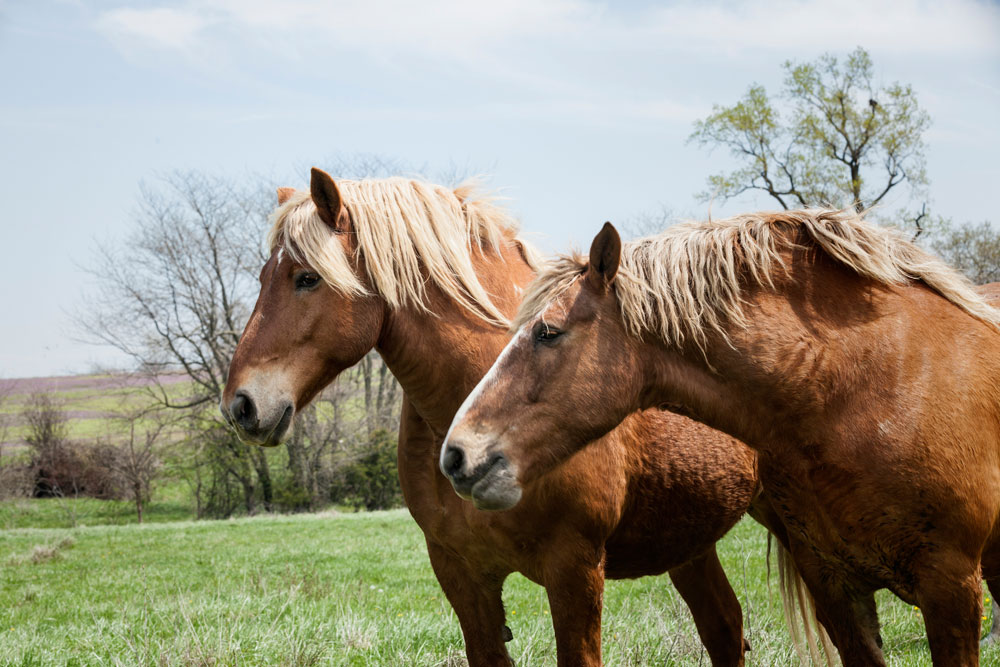
Researchers at the University of California, Davis (UC Davis), School of Veterinary Medicine have published information about DNA testing for a mutation that can be used to guide decisions in breeding and management practices to avoid or detect specific cancers in horses.
The research spawned four peer-reviewed articles:
- A missense mutation in damage‐specific DNA binding protein 2 is a genetic risk factor for ocular squamous cell carcinoma in Belgian horses, Equine Veterinary Journal 2020 Jan;52(1):34-40;
- Additional Evidence for DDB2 T338M as a Genetic Risk Factor for Ocular Squamous Cell Carcinoma in Horses, International Journal of Genomics 2019 Sept; 3610965;
- Limbal squamous cell carcinoma in a Rocky Mountain Horse: Case report and investigation of genetic contribution, Veterinary Ophthalmology 2019 Mar; 22(2):201-205;
- Genetic risk for squamous cell carcinoma of the nictitating membrane parallels that of the limbus in Haflinger horses, Animal Genetics 2018 Oct; 49(5):457-460.
The investigators in this equine cancer research are Rebecca R. Bellone, PhD; Mary Lassaline DVM, PhD, DACVO; Christopher M Reilly, MAS, DVM, DACVP; Tammy Miller Michau, DVM, MS, MSpVM, DACVO; Jiayin Liu; Savanna Vig, DVM; and Moriel Singer-Berk, BS.
UC Davis reported the following based on this research:
“Squamous cell carcinoma (SCC) is the most common cancer of eyes and the second most common tumor of the horse overall. A change in the DNA that also leads to a change in the gene product (missense mutation) in damage-specific DNA-binding protein 2 (DDB2, c.1012 C>T, p.Thr338Met) was previously found to be strongly associated with SCC in Haflingers. This study determined that this same mutation explains 76% of all ocular cases of the Haflinger and Belgian breeds. This variant also explained ocular SCC in the only reported case from the Rocky Mountain Horse breed. This variant was not associated with ocular SCC in the Arabian, Appaloosa, or Percheron breeds, or with oral or urogenital SCC of any breed investigated (P>0.05). Finally, functional analysis using recombinant DDB2 protein further supports that this variant (p.Thr338Met) is a causal genetic risk factor, as the protein with methionine at amino acid 338 is unable to bind to UV damaged DNA.”
How Does This Research Benefit Horses?
“This study confirmed that the DDB2 mutation is a risk factor specifically for ocular SCC in multiple breeds of horses (Haflinger, Belgian, and Rocky Mountain Horses, but not Appaloosa and Arabian). This further supports the use of this mutation as a breed specific DNA test to inform mating decisions and management practices, thus lowering the incidence of the disease, enabling earlier detection and better prognosis. minutes.”








